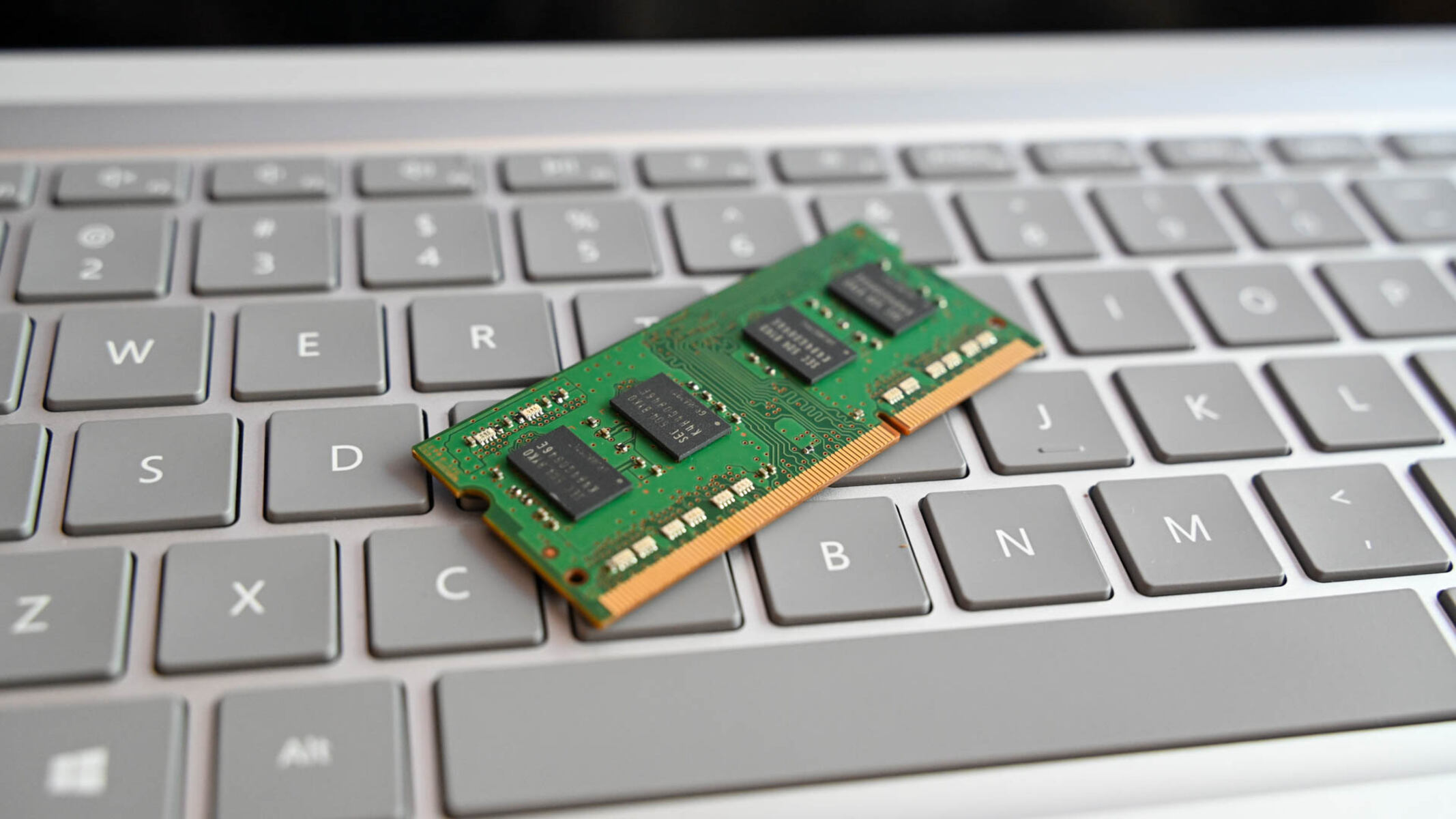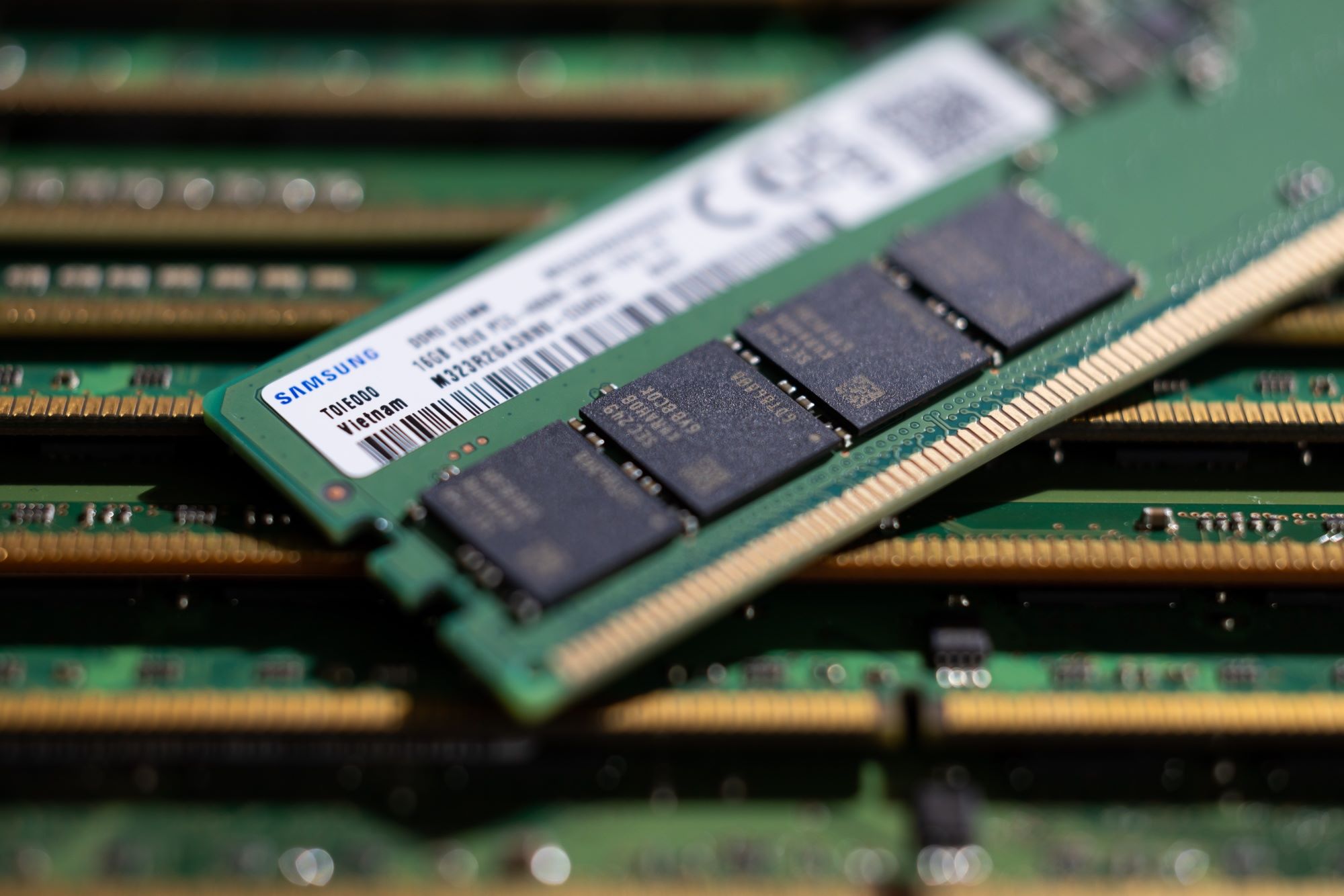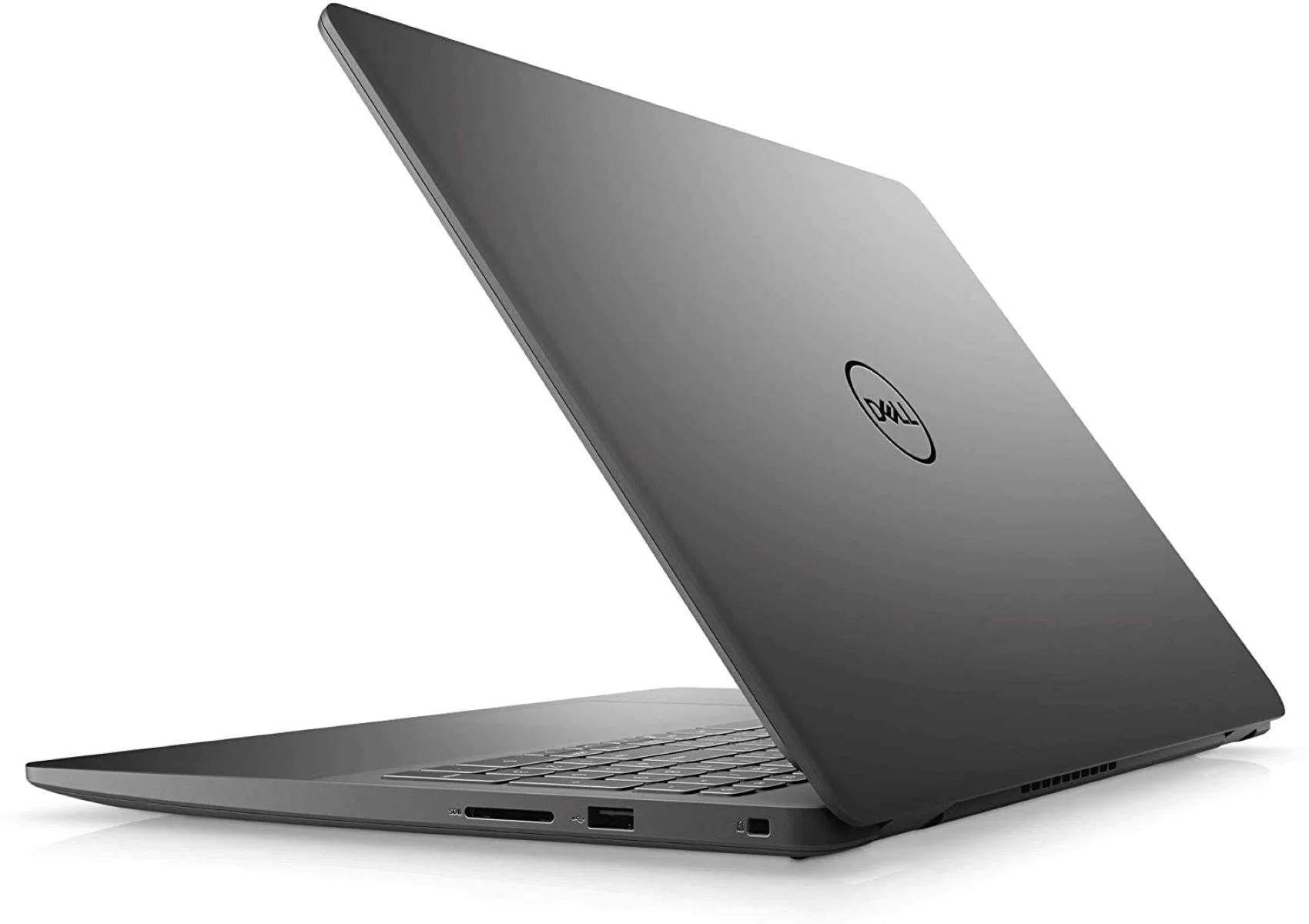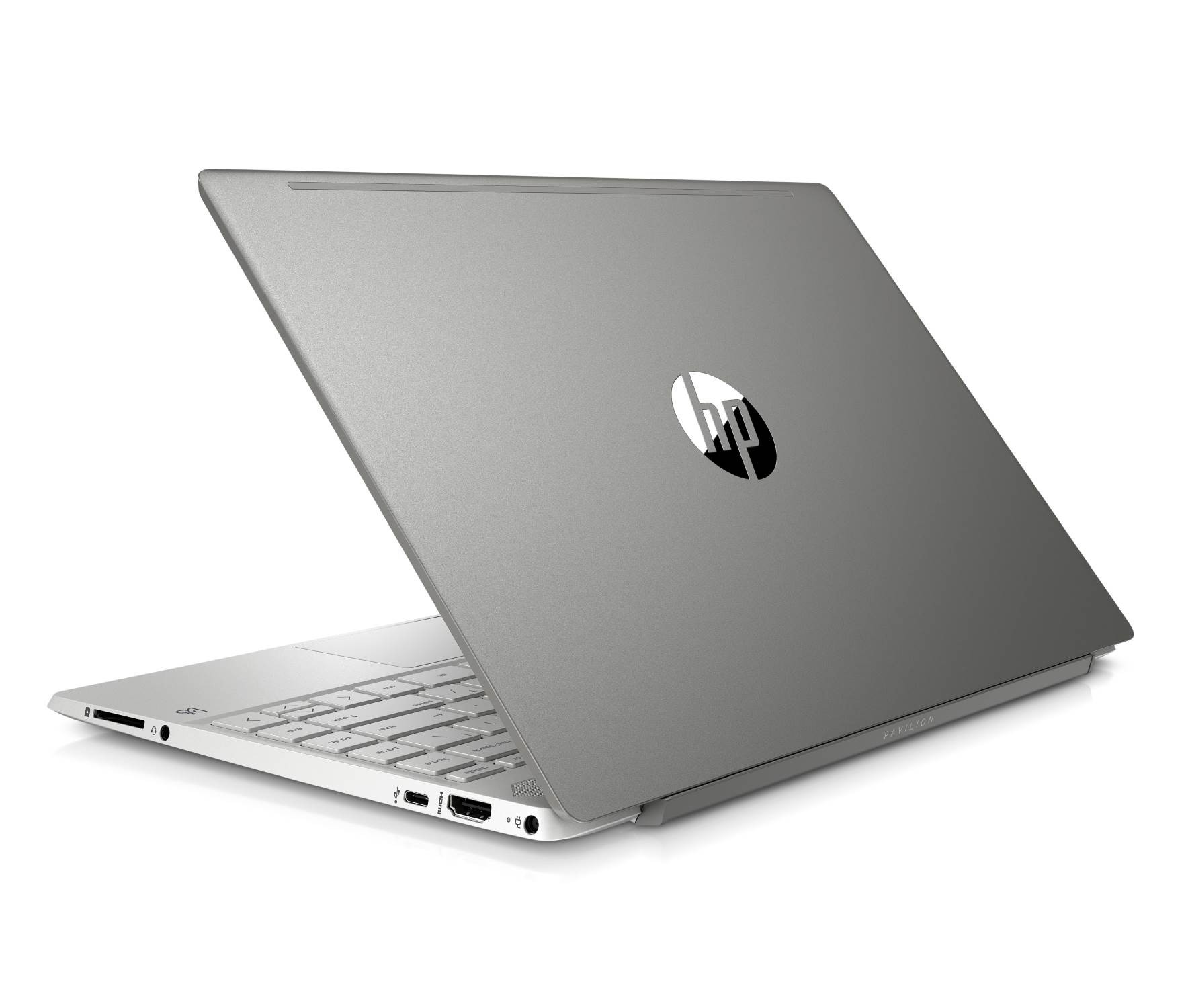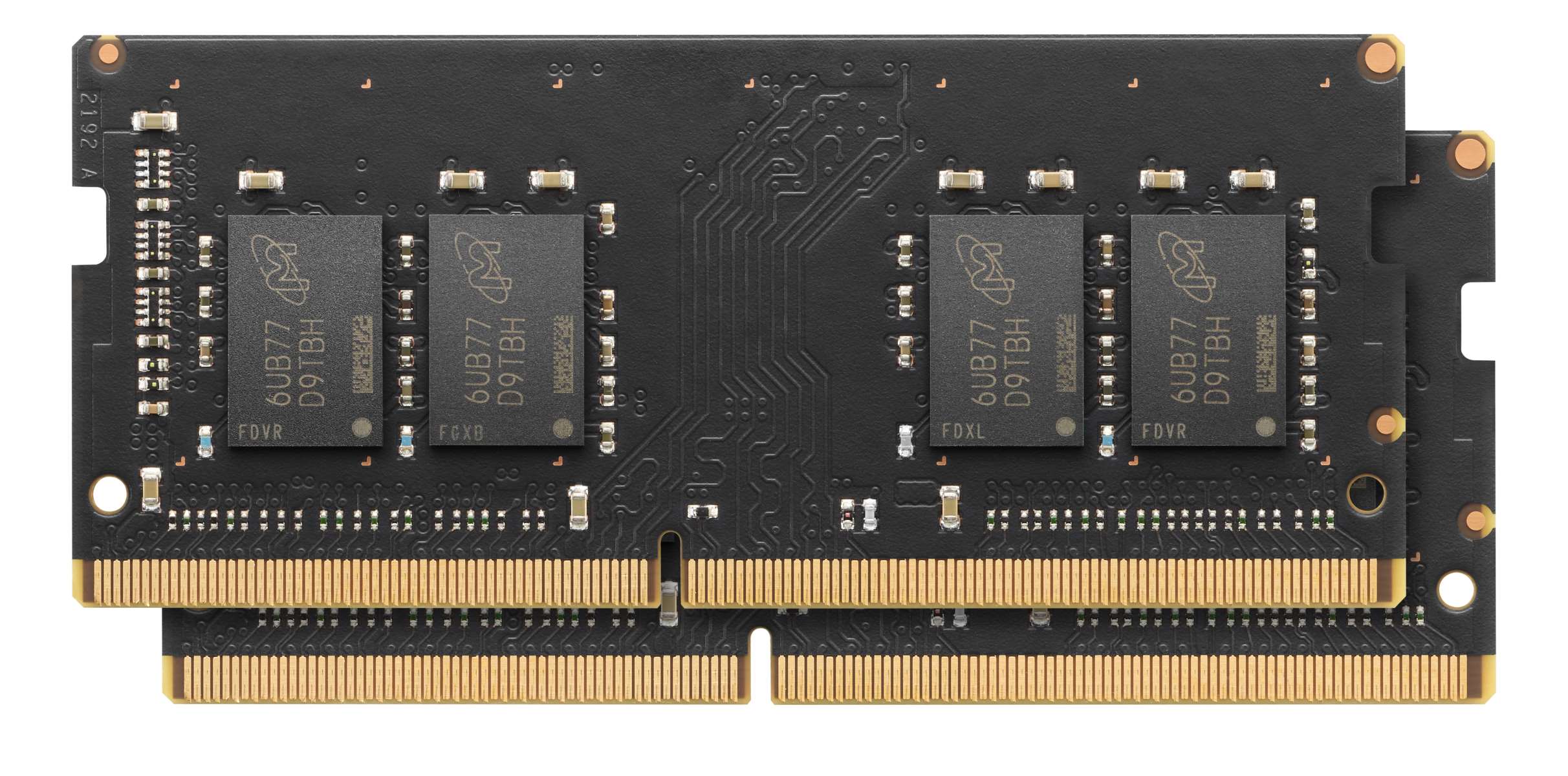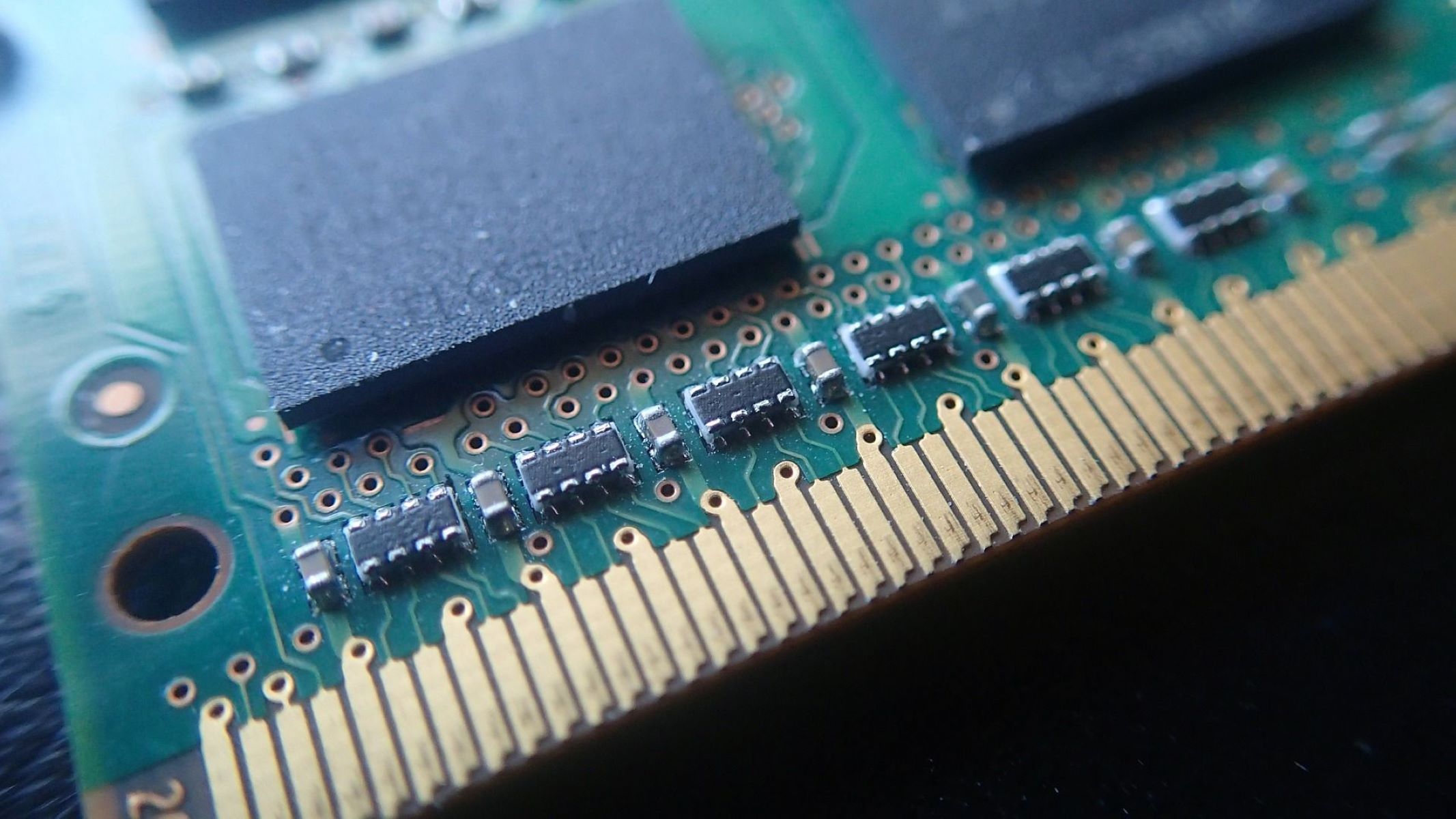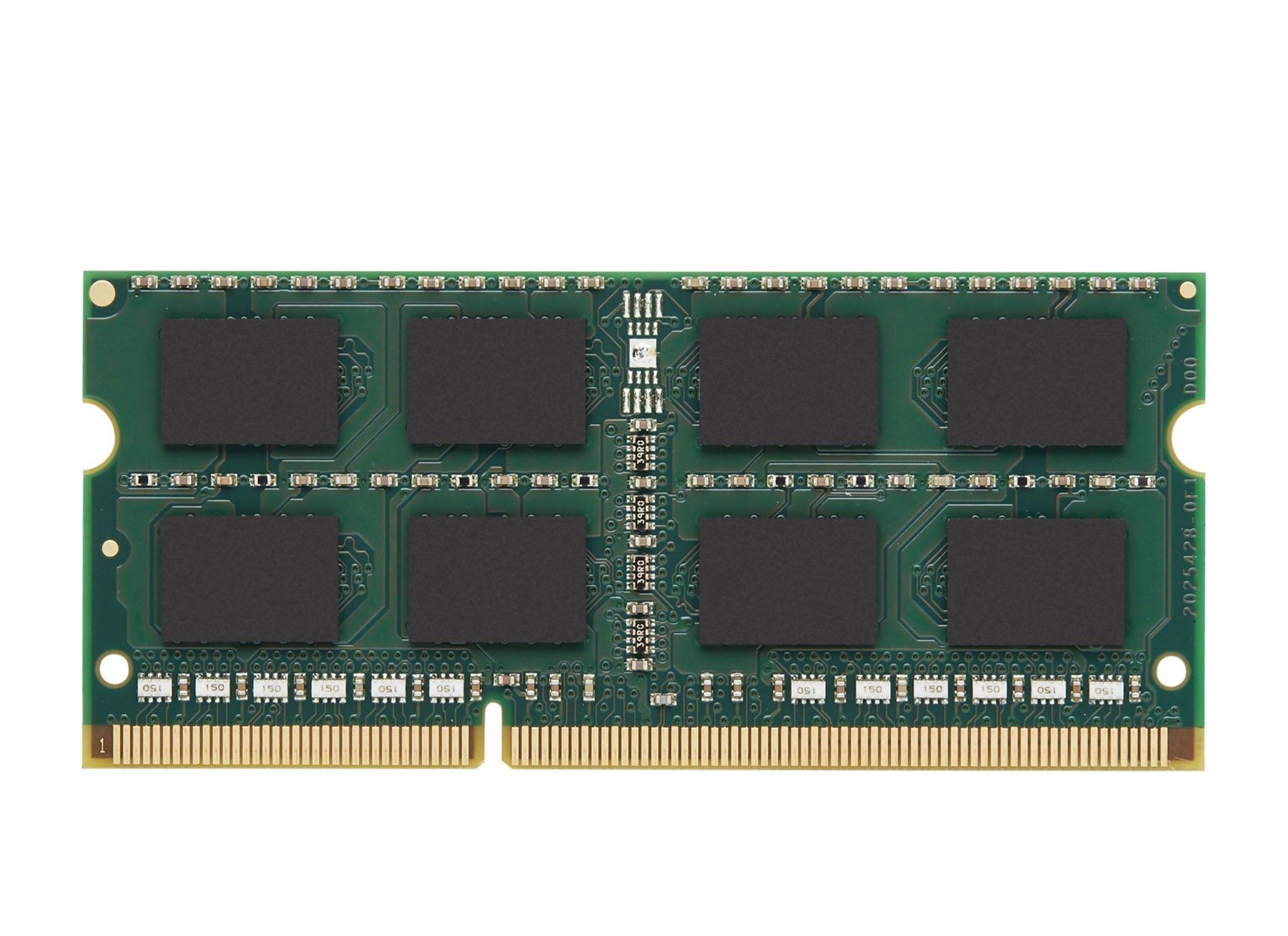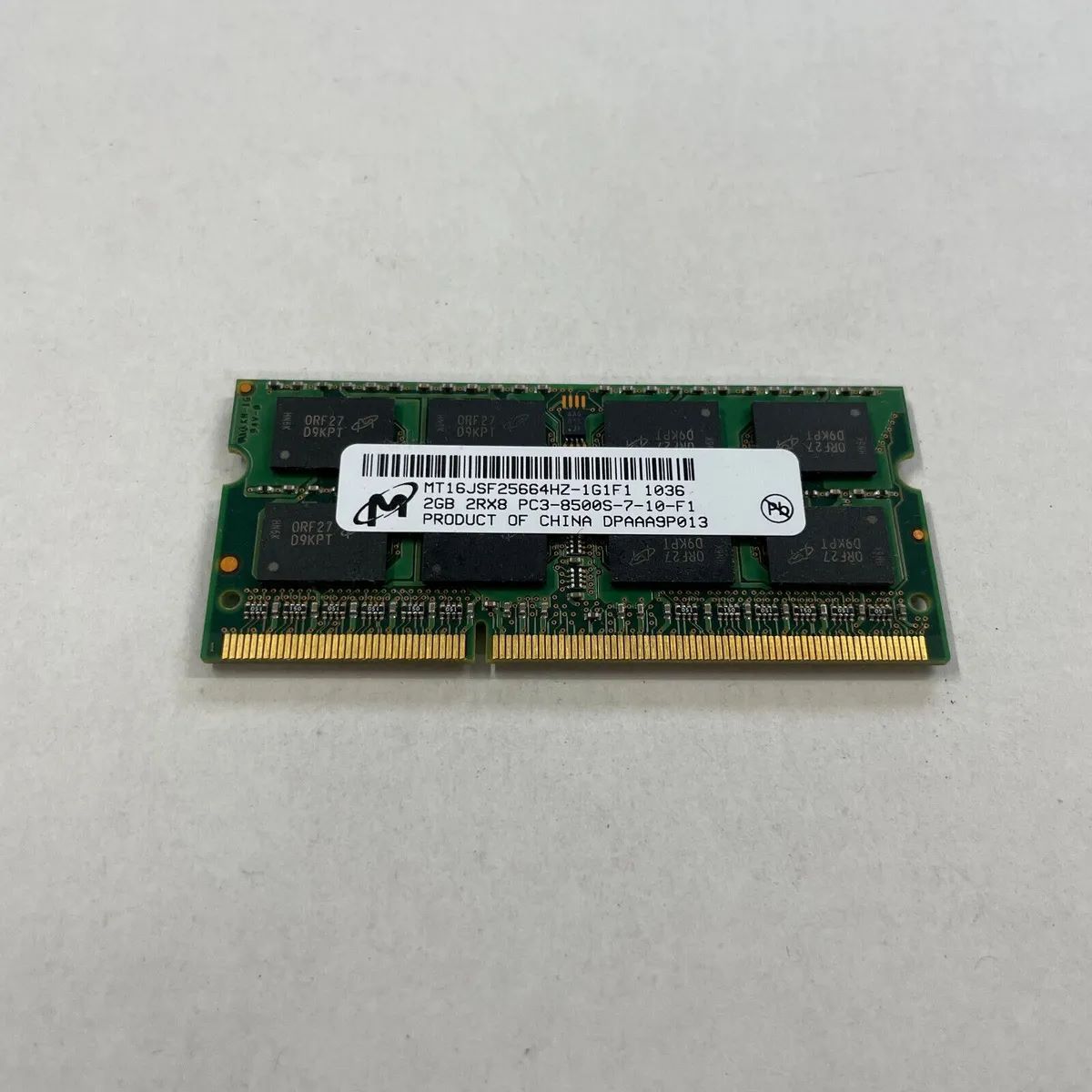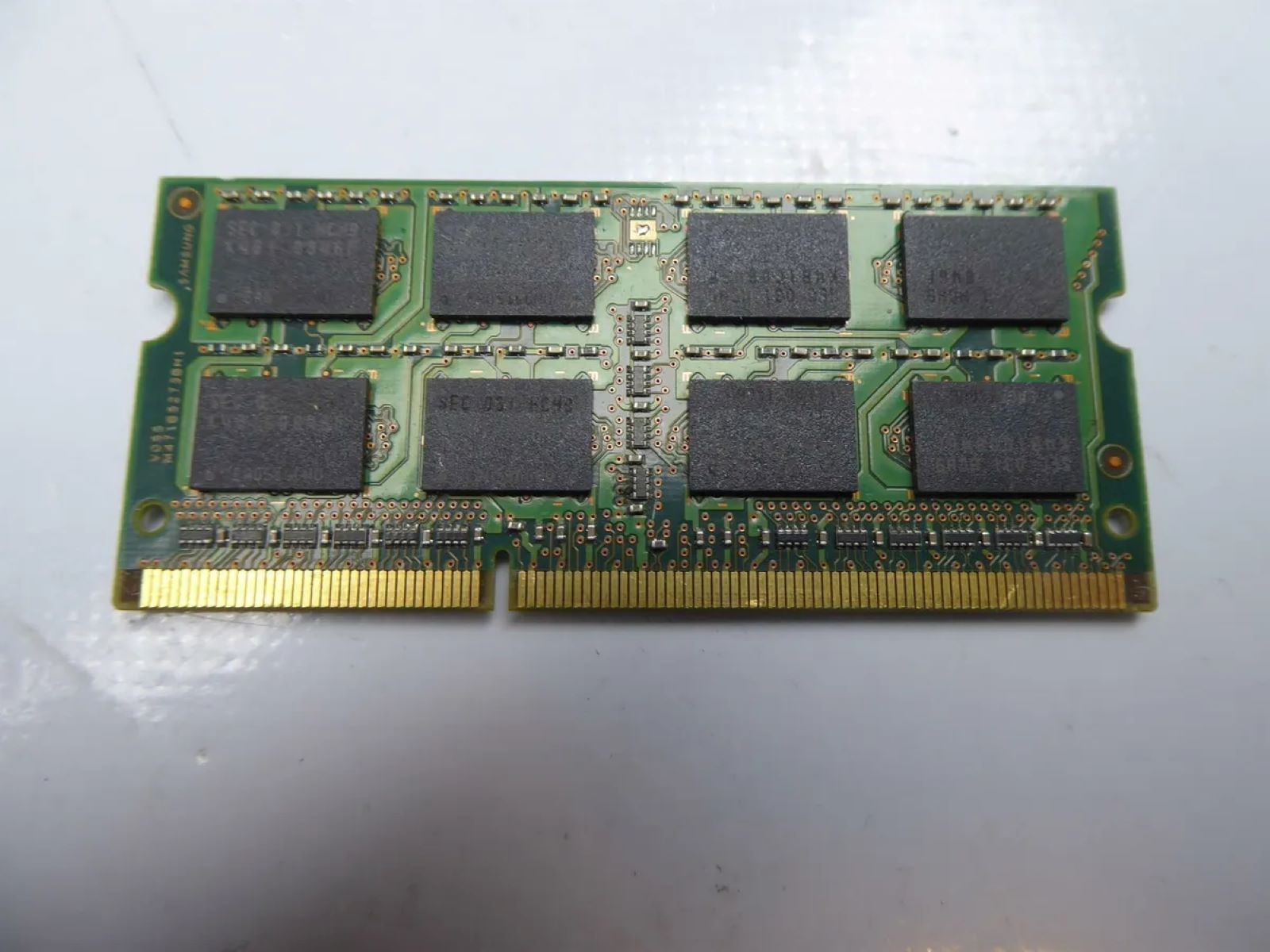Introduction
In today’s fast-paced digital world, having a high-performing computer is essential. Whether you’re a gamer, a creative professional, or simply a multitasker, one key component that can greatly impact your computer’s performance is its RAM (Random Access Memory) speed. RAM speed plays a crucial role in how quickly your computer can access and process data, which translates into smoother multitasking, faster application load times, and overall improved system performance.
But what exactly is RAM speed, and why is it important? In this article, we will explore the significance of RAM speed and how it affects your system’s overall performance. We will also provide you with practical tips on how to boost your RAM speed, so you can enhance your computer’s capabilities and optimize its efficiency.
Whether you’re looking to upgrade your system’s RAM or make tweaks to improve its speed, this article will guide you through the necessary steps to get the most out of your computer’s memory. So, let’s dive in and explore the world of RAM speed!
Why is RAM Speed Important?
RAM speed is a critical factor when it comes to your computer’s overall performance. RAM serves as the temporary storage space for data that is actively being used by your system and applications. The speed at which your RAM can read and write data directly affects how quickly your computer can carry out tasks and process information.
When you perform actions such as launching applications, loading files, or running multiple programs simultaneously, your computer accesses the necessary data from your RAM. The faster your RAM can retrieve and deliver that data to the processor, the quicker your computer can respond to your commands.
Additionally, RAM speed plays a significant role in gaming performance. Games often require a large amount of data to be quickly loaded into RAM, such as textures, models, and audio assets. Faster RAM speeds allow for a smoother and more immersive gaming experience, with reduced loading times and improved frame rates.
Furthermore, RAM speed is particularly crucial for tasks that involve heavy multitasking or resource-intensive applications. If you frequently work with large files, video editing software, or virtual machines, having faster RAM speed can significantly speed up data transfer and processing, resulting in a more efficient workflow.
Overall, RAM speed is vital because it directly impacts the responsiveness and efficiency of your computer. It determines how quickly your system can retrieve and deliver data, which in turn affects the performance and user experience across a wide range of tasks and applications.
How Does RAM Speed Affect System Performance?
The speed of your RAM modules directly affects the overall performance of your system. Here are some key ways in which RAM speed influences your computer’s performance:
- Data Access and Transfer: RAM speed determines how quickly your computer can access and transfer data. When you open a program or launch a multitasking session, the required data is loaded from your storage device into RAM. Faster RAM speed allows for quicker data retrieval, reducing load times and improving overall system responsiveness.
- Application Performance: RAM speed plays a significant role in the performance of applications. When you run resource-intensive software like video editing programs or virtual machines, faster RAM allows for smoother and more efficient data processing. This results in reduced lag, improved real-time rendering, and faster response times.
- Gaming Performance: Gamers heavily rely on fast RAM for a seamless gaming experience. Games often require a large amount of data to be loaded into RAM for smooth gameplay. Faster RAM speed ensures quicker loading times, reduced stuttering, and improved frame rates, all leading to a more immersive and enjoyable gaming experience.
- Multitasking Capabilities: If you regularly multitask and switch between various applications, faster RAM speed becomes crucial. It enables your system to handle multiple processes simultaneously without significant slowdowns. With faster RAM, you can smoothly switch between programs, work on complex projects, and maintain productivity.
- Overall System Efficiency: Faster RAM speed contributes to the overall efficiency of your system. It boosts the responsiveness of your computer, allowing for quick boot times, faster file transfers, and seamless navigation between different tasks. This enhanced efficiency translates into a smoother user experience and greater productivity.
In summary, RAM speed has a significant impact on system performance. It affects data access, application performance, gaming capabilities, multitasking abilities, and overall system efficiency. By utilizing faster RAM modules, you can unlock the full potential of your computer and enjoy a faster and more responsive computing experience.
How to Check Your Current RAM Speed
Before you begin boosting your RAM speed, it’s essential to know your current RAM speed. Here are a few methods you can use to check your RAM speed:
- Task Manager (Windows): On Windows computers, you can use the built-in Task Manager utility to check your RAM speed. Right-click on the taskbar and select “Task Manager” or press
Ctrl + Shift + Escto open it. In the Task Manager window, navigate to the “Performance” tab and click on “Memory.” Look for the “Speed” value, which indicates your current RAM speed. - System Information (Windows): Another way to check your RAM speed on a Windows computer is by using the System Information utility. Press the
Windows key + Rto open the Run dialog box. Type in “msinfo32” and hit Enter. In the System Information window, expand the “Components” category and click on “Memory.” The “Speed” value will display your current RAM speed. - About This Mac (Mac): If you’re using a Mac, you can check your RAM speed through the “About This Mac” feature. Click on the Apple menu in the top-left corner of the screen and select “About This Mac.” In the window that appears, click on the “Memory” tab. Here, you will find the information about your current RAM speed.
- Third-Party Software: There are various third-party software programs available that can provide detailed information about your computer’s hardware, including RAM speed. Tools like CPU-Z, Speccy, and HWiNFO can give you accurate details about your RAM speed and other system specifications.
By using any of these methods, you can quickly determine the current speed of your RAM modules. Once you have this information, you can proceed to optimize or upgrade your RAM for faster speed and improved system performance.
Understand RAM Speed Specifications
When it comes to RAM speed, it’s essential to understand the various specifications associated with it. Here are the key factors to consider:
- Clock Speed: The clock speed, measured in megahertz (MHz), refers to the speed at which the RAM modules can perform data transfers. A higher clock speed indicates faster data transfer rates. For example, a RAM module with a speed of 3200MHz will transfer data at a faster rate compared to a module with a speed of 2400MHz.
- DDR Generation: DDR (Double Data Rate) refers to the generation of RAM technology. Common DDR generations include DDR3, DDR4, and the newer DDR5. Each generation offers improved performance and higher data transfer rates compared to its predecessor. It’s important to check your computer’s compatibility with specific DDR generations before upgrading.
- Latency Timings: RAM latency timings, also known as CAS (Column Address Strobe) latency, indicate the delay it takes for the RAM module to access requested data. Lower latency timings result in faster data retrieval. It is usually represented by a series of four numbers, such as 16-18-18-36. The first number (CAS latency) is the most important, and lower values are desirable for better performance.
- XMP Profiles: XMP (Extreme Memory Profile) is a feature present in most RAM modules that allows for easy overclocking. XMP profiles are pre-configured settings that optimize the RAM modules for increased performance. By enabling the appropriate XMP profile in the BIOS, you can achieve higher clock speeds and lower latency settings for your RAM.
- Compatibility: It’s crucial to ensure that any RAM modules you purchase are compatible with your motherboard. Check your motherboard’s specifications to determine the supported RAM speeds, DDR generation, and maximum capacity. Compatibility issues can lead to system instability or the RAM operating at lower speeds than its full potential.
Understanding these specifications will help you make informed decisions when upgrading or optimizing your RAM for faster speed. It’s also worth noting that RAM speeds should be considered in conjunction with other hardware components, such as the processor and motherboard, to ensure optimal performance.
Upgrade RAM for Faster Speed
If you’re looking to boost your system’s RAM speed, upgrading your RAM modules is a viable option. Here are the steps to upgrade your RAM for faster speed:
- Determine the Compatibility: Before purchasing new RAM modules, check your computer’s motherboard specifications to ensure compatibility. Look for the supported RAM speed, DDR generation, and maximum capacity. This information will help you choose the right RAM modules for your system.
- Select High-Speed RAM: Look for RAM modules with higher clock speeds and lower CAS latency timings. Higher clock speeds, such as 3200MHz or 3600MHz, ensure faster data transfer rates, while lower latency timings, such as CL16 or CL14, result in quicker data access. Consider opting for DDR4 or DDR5 modules for faster performance.
- Install the RAM Modules: Power off your computer and disconnect all cables. Open the computer case and locate the RAM slots. Press down on the release tabs on the sides of the existing RAM modules to remove them. Install the new RAM modules carefully, matching the notches on the modules with the slots. Press firmly until the modules click into place.
- Boot and Verify: Close the computer case, reconnect the cables, and power on your computer. Once the system boots up, check the system information or use a diagnostic tool to verify that the new RAM modules are recognized and operating at the intended speed.
- Enable XMP Profile (If Applicable): If your RAM modules support XMP, access your computer’s BIOS settings by pressing the appropriate key during startup (usually Del, F2, or Esc). Locate the XMP settings and enable the profile that matches your RAM modules’ specifications. This will automatically set the optimal clock speed and latency timings for your RAM.
- Run Stability Tests: To ensure stability and optimal performance, consider running stress tests or benchmarking tools to verify that the new RAM modules are functioning correctly at the desired speed. Monitor the system for any signs of instability, crashes, or excessive heat.
By following these steps, you can upgrade your RAM modules for faster speed and improved system performance. Remember to handle the RAM modules with care, ensure proper compatibility, and make any necessary BIOS adjustments to maximize the benefits of the upgrade.
Overclock Your RAM for Maximum Performance
If you want to squeeze out every bit of performance from your RAM, you can consider overclocking it. Overclocking involves running your RAM modules at speeds higher than their default specifications. Here are the steps to overclock your RAM:
- Familiarize Yourself: Understand the risks associated with overclocking, including potential instability and data loss. It’s crucial to proceed with caution and ensure that your system has adequate cooling.
- Access BIOS Settings: Restart your computer and enter the BIOS settings by pressing the appropriate key during startup (usually Del, F2, or Esc). Consult your motherboard’s manual or manufacturer’s website for specific instructions.
- Locate Memory Settings: Navigate through the BIOS options to find the section related to memory settings or overclocking. This section might be labeled as “DRAM Configuration,” “Memory Frequency,” or “Overclocking.”
- Adjust RAM Frequency: Locate the option to manually set or adjust the RAM frequency or clock speed. Increase the value to a desired overclocked frequency, such as 10% or 20% higher than the default. Keep in mind that not all systems or RAM modules can handle significant overclocks, so it’s crucial to find the right balance.
- Modify Voltage (If Necessary): Increasing the RAM frequency may require additional voltage to maintain stability. Locate the option to adjust the RAM voltage and increase it incrementally if needed. Be cautious not to exceed safe voltage limits specified by the RAM manufacturer.
- Save and Exit: Save the changes made to the BIOS settings and exit. The system will restart, applying the new RAM overclock settings.
- Stress Test and Monitor: After the system boots up, run stress tests or benchmarking utilities to ensure stability. Monitor the system for any signs of instability, crashes, or overheating. If stability issues arise, revert to the default settings or make smaller adjustments to find a stable overclock.
Keep in mind that overclocking carries risks, and not all RAM modules or systems can handle significant overclocks. It’s essential to proceed cautiously, monitor temperatures, and be prepared to revert to default settings if instability occurs.
Overclocking your RAM can provide a noticeable boost in performance, but it should only be attempted by advanced users who understand the implications and take necessary precautions.
Optimize System Settings for Better RAM Speed
In addition to upgrading your RAM or overclocking it, optimizing certain system settings can help improve RAM speed and overall system performance. Here are some key optimizations to consider:
- Close Unnecessary Programs and Processes: Running too many programs and background processes can consume valuable RAM resources. Close any unnecessary applications, especially those that are resource-intensive, to free up RAM for other tasks.
- Minimize Startup Programs: Limit the number of programs that automatically launch at startup. These programs consume valuable system resources, including RAM. Use the Task Manager (Windows) or Activity Monitor (Mac) to disable startup programs that are not essential.
- Manage Virtual Memory (Windows): Adjust the virtual memory settings to optimize RAM usage. Right-click on “This PC” or “My Computer,” select “Properties,” go to “Advanced system settings,” and click on the “Settings” button under the “Performance” section. In the “Performance Options” window, navigate to the “Advanced” tab, click on “Change” under the Virtual Memory section, and ensure that “Automatically manage paging file size for all drives” is selected.
- Clear Temporary Files: Temporary files can accumulate and take up valuable storage space, which can indirectly impact RAM performance. Use disk cleanup utilities or third-party software to remove temporary files regularly.
- Enable Fast Startup (Windows): Fast Startup is a feature in Windows that combines hibernation and shutdown processes to speed up system boot times. It can indirectly improve RAM performance by reducing boot time and allowing faster access to applications.
- Update Device Drivers: Outdated or incompatible device drivers can cause system slowdowns and memory issues. Ensure that all your device drivers are up to date by visiting the manufacturer’s website or using driver update software.
- Regular System Updates: Keeping your operating system up to date with the latest software updates and patches helps optimize system performance, including RAM usage. Install updates regularly to benefit from performance improvements and bug fixes.
By implementing these system optimizations, you can enhance RAM speed and optimize overall system performance. Remember to periodically review and adjust these settings based on your specific needs and system requirements.
Close Unnecessary Programs and Processes
One effective way to improve RAM speed and optimize system performance is to close unnecessary programs and processes that are running in the background. When you have multiple applications and processes running simultaneously, they consume valuable system resources, including RAM. Closing unnecessary programs helps free up memory and allows your system to allocate more resources to the tasks that matter the most.
Here are a few steps you can take to close unnecessary programs and processes:
- Identify Resource-Intensive Applications: Start by identifying the applications that are consuming a significant amount of RAM. Open the Task Manager (Ctrl + Shift + Esc on Windows, or Activity Monitor on Mac) and go to the “Processes” or “Applications” tab. Look for programs that are using a large amount of memory.
- Close Idle Software: Close any applications that you are not actively using. This includes web browsers with multiple tabs, media players, chat applications, or any other software that is running in the background. Simply click on the “X” or close button on each program to shut them down.
- Disable Startup Programs: Many applications automatically start when you boot up your computer and continue to run in the background, consuming valuable system resources. To disable startup programs, open the Task Manager and go to the “Startup” tab (Windows) or use the “Login Items” feature in System Preferences (Mac) to manage which programs launch at startup. Disable or remove programs that you don’t need immediately upon booting up.
- End Unresponsive Processes: If any programs or processes become unresponsive or start consuming excessive resources, they could be causing system slowdowns. In the Task Manager (Windows) or Activity Monitor (Mac), look for processes that are listed as “Not Responding” and terminate them by selecting them and clicking on the “End Task” or “Force Quit” button.
- Use Alternative Lightweight Software: Consider using lightweight alternatives to resource-intensive programs. For example, you can use a lightweight text editor instead of a heavy word processor or a lightweight media player instead of a resource-heavy media player. These alternatives can help reduce memory usage and improve overall system performance.
By closing unnecessary programs and processes, you free up valuable RAM resources, allowing your system to allocate more memory to the tasks you are actively working on. This can result in faster response times, smoother multitasking, and an overall improvement in system performance.
Reboot Your System Regularly
Restarting your computer regularly is a simple yet effective way to improve RAM speed and maintain optimal system performance. Rebooting allows your operating system to clear out temporary files, release system resources, and refresh essential system processes. Here are the reasons why rebooting is beneficial:
- Release Held Resources: Over time, certain processes and applications can hold onto system resources, including RAM, even after they are no longer in use. By rebooting your system, you release these held resources, allowing your computer to start fresh and allocate resources more efficiently.
- Clear Temporary Files: Rebooting helps clear out temporary files that may accumulate in your system’s temporary storage locations. Temporary files can consume RAM, especially if they are not automatically cleared during normal operations. Restarting your computer clears these files and allows more memory to be available for essential tasks.
- Restore System Stability: Continuous use of your computer can lead to the occurrence of minor system issues or glitches that can impact performance. Rebooting your system helps restore system stability by closing any malfunctioning processes or services and reloading them from a clean state.
- Apply Updates and Fixes: Many software updates and system fixes require a restart to take effect. By rebooting your system regularly, you ensure that these updates are properly applied, allowing your computer to benefit from the latest performance optimizations and bug fixes.
- Refresh System Processes: Rebooting your system refreshes essential system processes and services that run in the background. This helps ensure that these processes are running optimally and enables your computer to allocate resources more efficiently.
It’s recommended to reboot your system at least once a week, or more frequently if you notice any performance degradation or stability issues. Additionally, if you have recently installed new software or made system configuration changes, a restart is often necessary to allow the changes to take effect.
Remember to save any important work and close running applications before initiating a system reboot. This ensures that all your data is properly saved and prevents any potential data loss.
By regularly rebooting your system, you can enhance RAM speed, clear out unnecessary files, resolve minor system issues, and maintain optimal system performance.
Keep Your RAM Clean and Dust-Free
Maintaining a clean and dust-free environment for your RAM modules is essential for optimal performance. Dust and debris can accumulate on the RAM modules and their slots over time, affecting their ability to dissipate heat and potentially causing overheating issues. Here are some ways to keep your RAM clean and dust-free:
- Power Off and Unplug: Before cleaning your RAM, make sure to power off your computer and unplug it from the power source. This ensures your safety and prevents any damage to the system.
- Use Compressed Air: Use a can of compressed air to gently blow away dust and debris from the RAM modules, slots, and surrounding areas. Hold the can upright and use short bursts of air to avoid creating moisture or causing any damage.
- Brush Away Dust: Use a small, soft-bristled brush, such as a clean paintbrush or an anti-static brush, to gently brush away any remaining dust from the RAM modules and slots. Be careful not to apply excessive force or touch any sensitive components.
- Avoid Vacuum Cleaners: Avoid using vacuum cleaners as they generate static electricity, which can damage delicate electronic components. Vacuum cleaners can also create a suction force that may dislodge or damage the RAM modules.
- Handle RAM Modules Carefully: When removing or installing RAM modules, handle them by the edges and avoid touching the gold contacts or any exposed components. Touching the gold contacts or exposing the RAM modules to static electricity can cause damage.
- Keep Airflow Unobstructed: Ensure that the airflow around the RAM modules is not obstructed. Make sure that your computer case’s cooling fans are functioning correctly and that there is proper ventilation in the area where your computer is located.
- Regular Maintenance: Make it a habit to regularly clean your computer, including the RAM modules, to prevent dust buildup. Regular maintenance can help extend the lifespan of your RAM and improve system performance.
Keeping your RAM clean and free from dust ensures proper airflow and heat dissipation, which helps maintain stable performance and prevents overheating issues. By following these cleaning practices, you can extend the lifespan of your RAM modules and keep your computer running smoothly.
Conclusion
RAM speed plays a crucial role in determining the overall performance of your computer. By understanding the importance of RAM speed and implementing the strategies discussed in this article, you can optimize your system’s performance and enhance your computing experience.
We explored the significance of RAM speed and how it affects system performance. Faster RAM speeds result in quicker data access and transfer, improved application performance, enhanced gaming capabilities, and smoother multitasking.
We discussed various methods for checking your current RAM speed, understanding RAM speed specifications, and upgrading your RAM for faster speed. Whether you choose to install higher-speed RAM modules or overclock your existing RAM, these steps will help you maximize your system’s potential.
Optimizing system settings, such as closing unnecessary programs and processes, rebooting regularly, and keeping your RAM clean and dust-free, further contribute to optimal RAM performance and overall system efficiency.
By implementing these strategies, you can enjoy a faster, more responsive computer that can handle resource-intensive tasks and deliver an improved user experience.
Remember to always research and ensure compatibility when making any hardware upgrades, and proceed with caution when overclocking your RAM. Regularly maintaining and optimizing your computer’s RAM will help keep your system running smoothly and extend its lifespan.
Now that you understand the importance of RAM speed and how to boost it, take action and apply these techniques tailored to your specific needs. With optimized RAM speed, you can unlock the true potential of your computer and enjoy a seamless computing experience.







